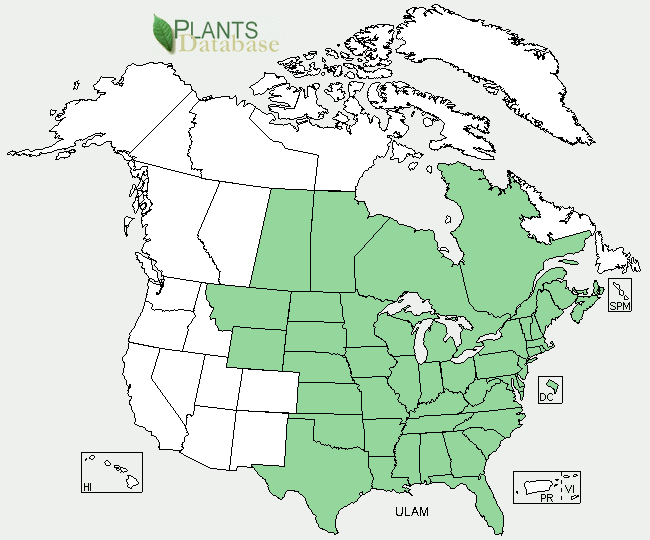|
|
 |
 |
 |




American Elm
(Ulmus americana)
Species Distribution

Height:
This elm grows from 20 to 30 meters tall.
Leaf and Bark Type:
The leaves of this tree are alternate and simple. They grow from 3 to 5 inches long and 1 to 3 inches wide. The American Elm bark has ridges that criss cross and show different layers of bark color, but are mostly a dark gray color and have deep ridges within the bark.
Where does it grow and in what conditions:
This elm is found throughout Eastern North Americs and ranges from Cape breton Island all the way to Texas. The climate this tree grows in is from warm and humid in the southeast to cold and dry in the northwest. It grows degrees as low as 0 F in the winter and up to 105 degrees F in some locations. American ems are found on well-drained sands, organic bogs, undifferentiated silts, poorly drained clays, prairie loams, and many intermediate combinations.
Pollinators:
American elms are pollinated by wind, which is common for small flowers with a lot of pollen.
Flowers:
Its flowers have small greenish flowers organized in cluster on the stems.
Fruits:
Fruits are half and inch long, rounded and flat.
Uses
The American elm is prized for its use in horticulture. It is often seen in front yards and used as an ornamental tree.
GPS location
Submitted by Clifton and Yarbrough
Citations:
http://www.thetreegeek.com/trees/american-elm/
http://www.fcps.edu/islandcreekes/ecology/american_elm.htm
https://nhgardensolutions.files.wordpress.com/2013/04/9-american-elm-flowers.jpg
|
|
|
 |
|
 |
|
|

